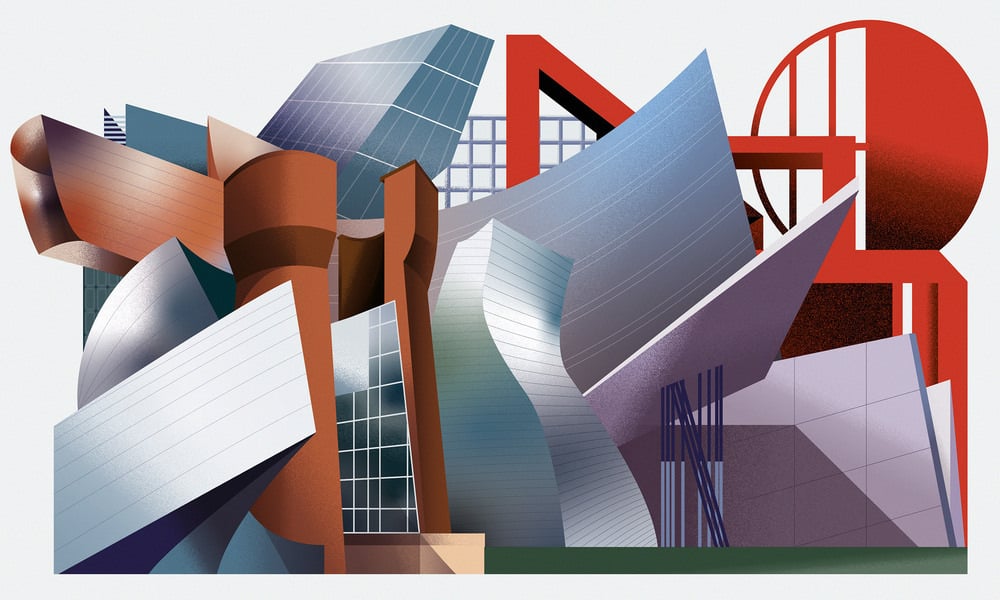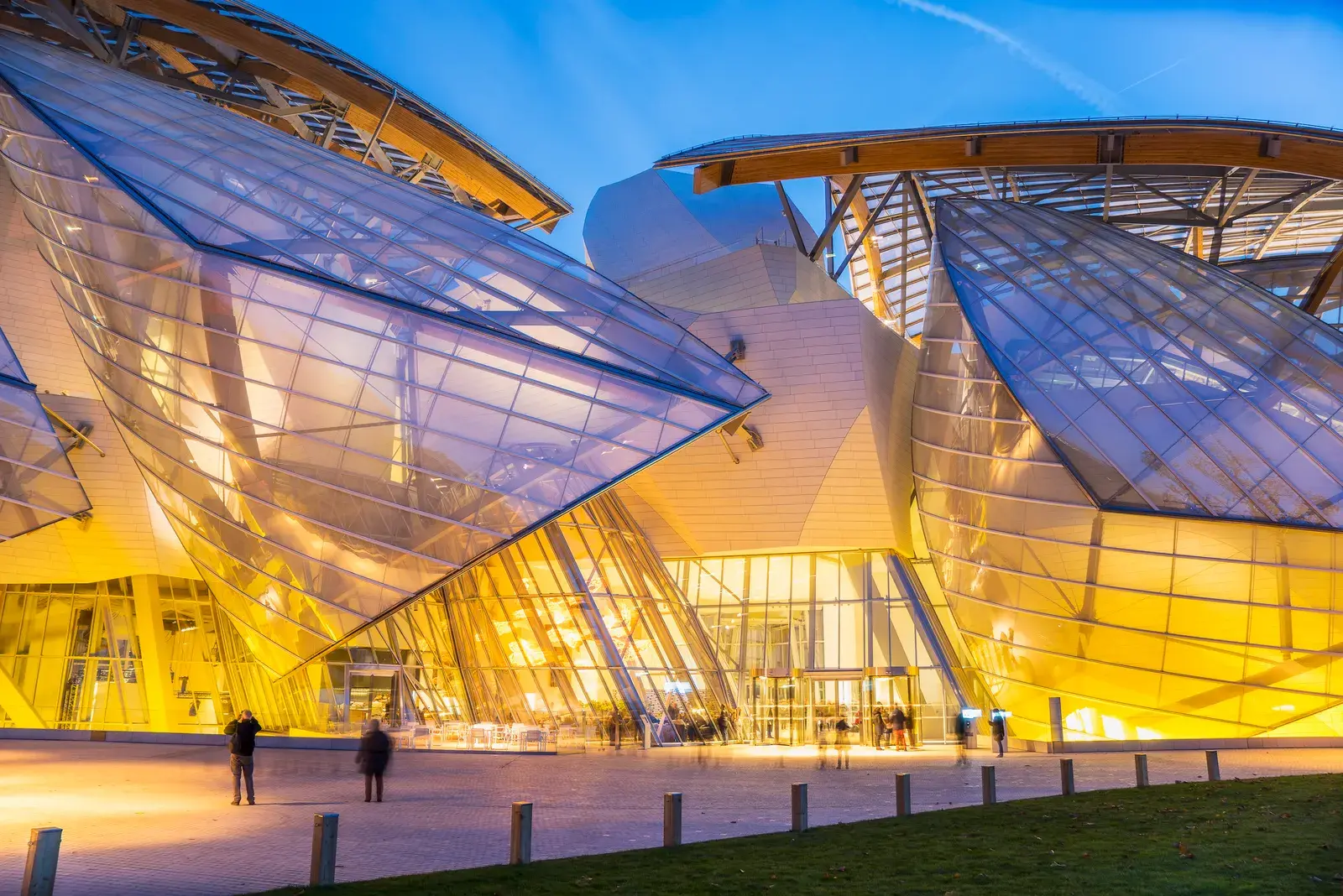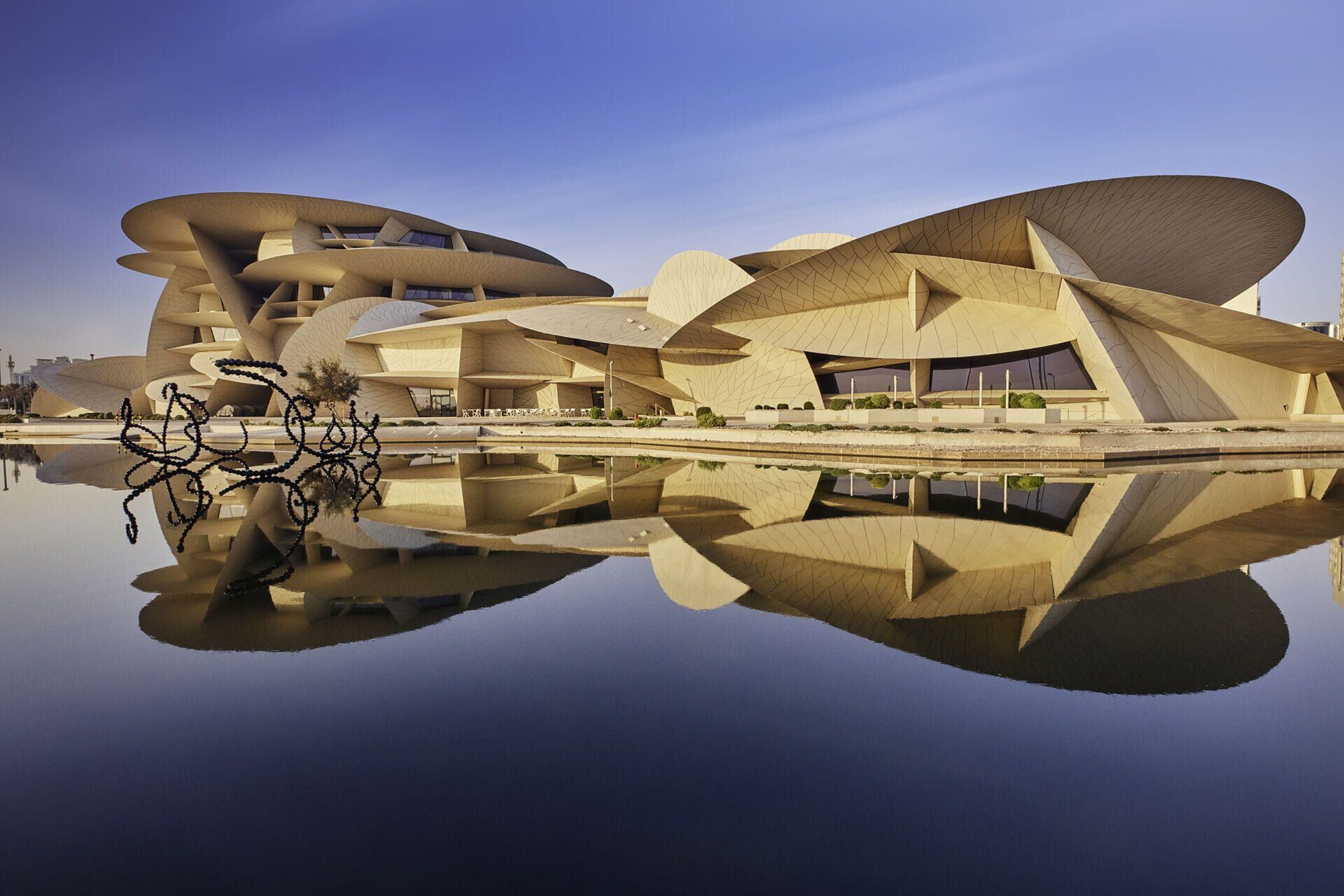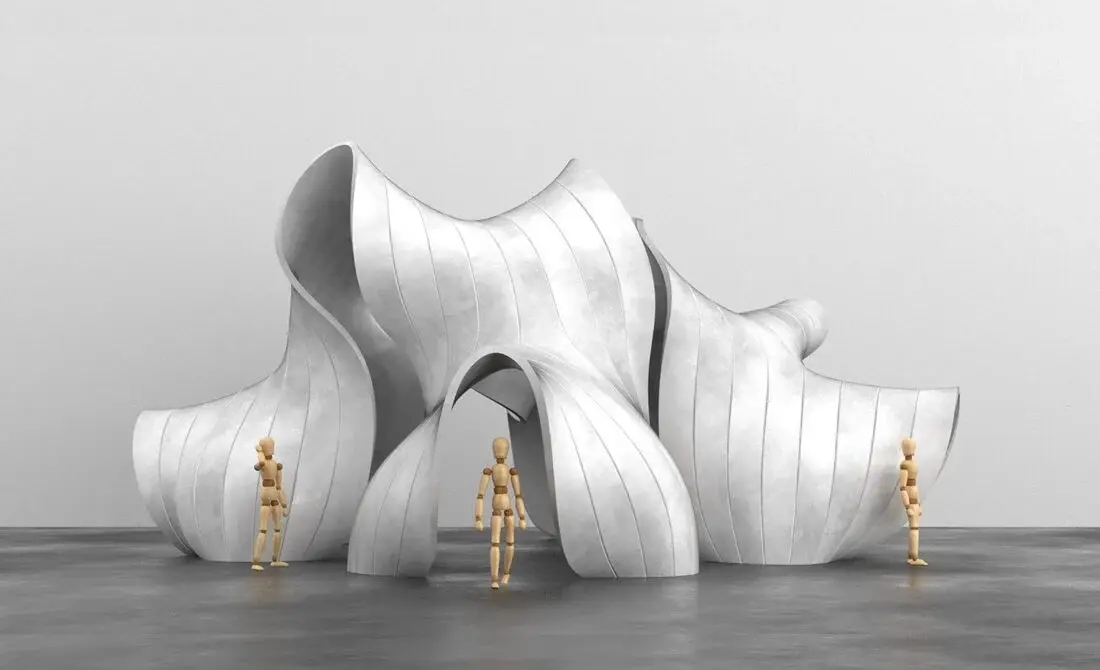What is Deconstructivism Architecture: Origin, Characteristics, Architects & Famous Buildings

Table of Contents
What is Deconstructivism in Architecture?
The 1980s witnessed the emergence of deconstructing design in reaction to postmodernism and deconstructivism architecture. It challenges conventional ideas of harmony and consistency in building design by fracturing, distorting and disrupting architectural forms. Deconstructivist buildings often exhibit ambiguous and complex geometries, nonlinear shapes and unusual material combinations. Deconstructivism in architecture refers to dismantling the architectural components to challenge conventional ideas of shape and function. Frank Gehry, Zaha Hadid and Daniel Libeskind are famous architects who practised deconstructivist architecture through their iconic designs.
Origin and Emergence of deconstructivism buildings
The theory of deconstructivism movement was established by the French philosopher Jacques Derrida in the 1960s, is the origin of Deconstructivism in Architecture. The first people, after this, who used deconstructivism in their work were post-structuralist thinkers like Derrida and Peter Eisenman, along with architects like Bernard Tschumi. The dispersion and shifting of architectural elements were a priority in their design. The 1988 exhibition "Deconstructivism in Architecture" at the Museum of Modern Art in New York, helped propel the concept of deconstructionism to a broader audience. The exhibition showcased the creations of architects connected to the movement, including Frank Gehry, Zaha Hadid, and Daniel Libeskind. The campaign has had a big influence on architecture since it first appeared, upending preconceived ideas about form, function, and structure.

The Deconstructivist philosophy behind its emergence
It is believed that modernist architecture has produced impersonal and cold buildings because of its emphasis on logic, structure and finality in architectural design. The philosophy behind deconstructivism in architecture is to question the traditional architectural concepts of shape, function and structure. They also create more expressive, engaging buildings that reflect their culture and social context.
Deconstructivism Architecture Characteristics
Deconstructivism in architecture represents a radical break from traditional design and a rejection of the restrictions imposed by modernism. The impact of deconstructivism extends far beyond the buildings themselves, creating new opportunities for architectural expression. We enlist some features that made the movement catch the eye of many famous names in the architecture, engineering and construction (AEC) industry.

1. Fragmentation and Distortion: Deconstructivist structures are known for their fragmented and distorted geometries, which are against conventional ideas of balance and symmetry. These buildings have the appearance of being pulled apart or dislocated, with various structural elements seeming to be in tension with one another.
2. Asymmetry: Deconstructivist structures frequently have asymmetrical, irregular shapes that place more emphasis on the horizontal and diagonal than the vertical. As a result, there is a sense of dynamism and movement as well as confusion and unease.
3. Industrial Materials: Steel, concrete, and glass are common industrial materials used by deconstructivist architects. These components are frequently left exposed, which gives the buildings an even more unfinished and raw appearance.
4. Deconstruction of Traditional Forms: It blurs the lines between inside and outside and contests the idea that a building is a static object. It challenges traditional architectural concepts of design and function within buildings. It is demonstrated by the displacement and separation of architectural components, which gives a sense of motion and instability.
5. Emphasis on Interior Space: The interiors of deconstructivist buildings are intricate and labyrinthine, with spaces intended to be explored and enjoyed. Facilities like Zaha Hadid's MAXXI National Museum of the 21st Century Arts in Rome, Italy, which has a complex and interconnected series of galleries and spaces, exhibit this emphasis on the interior space.
6. Playfulness and Humor: It has a playful and humorous quality because architects use unexpected materials and forms to surprise and delight viewers. It is seen in structures like Frank Gehry's Guggenheim Museum in Bilbao, Spain, which has a fragmented and distorted titanium exterior.
Also Read: Carbon Negative Architecture: What It Is and How It Will Save Our Planet
Famous Pioneer Architects and Notable Buildings
Deconstructivism, with its deformed shapes challenging gravity, gave architects a platform to exhibit their design and engineering prowess. A class apart from conventional and traditional methods and style, deconstructive concepts gave the architectural world some inspiring designs that stand as a testament of human ingenuity. Through structures that push the boundaries of design and challenge conventional ideas of form and function, these architects and others like them have significantly contributed to the growth of deconstructivism in architecture.
.webp?width=1000&height=562&name=Vitra%20Design%20Museum%2c%20by%20Frank%20Gehry%20(Weil%20am%20Rhein%2c%20Germany).webp)
1. Frank Gehry
Gehry is perhaps the most famous architect associated with deconstructivism in architecture, having designed iconic buildings such as the Guggenheim Museum Bilbao and the Walt Disney Concert Hall.
-
Guggenheim Museum, Bilbao
Spain's Guggenheim Museum is the most well-known deconstructivism example, which was designed by Frank Gehry. Traditional ideas of architectural symmetry and balance are put to the test by the building's intricate and fragmented form and iconic titanium cladding. Because of the museum's asymmetrical shape, there is a sense of movement and dynamism.

-
Dancing House, Prague
Frank Gehry's Dancing House in Prague has an unusual shape that resembles a pair of dancers. With its curved lines and tilted angles, evokes a sense of movement and fluidity, challenging conventional notions of architectural order, portraying deconstructivism architecture characteristics

2. Zaha Hadid
The London Aquatics Centre and the MAXXI National Museum of 21st Century Arts in Rome are just two of the iconic structures Hadid designed. Her structures are recognized for their use of curved, asymmetrical shapes and their dynamic, flowing forms.
-
London Aquatics Centre, London
The Olympic venue was designed by Zaha Hadid Architects and has a dynamic, flowing shape that resembles the flow of water. Its organically curved shape challenges conventional notions of architectural order, and the interior is flooded with natural light owing to its transparent facade.

-
MAXXI National Museum
MAXXI National Museum of 21st Century Arts, Rome Designed by Zaha Hadid, this museum features a complex and irregular form that challenges traditional notions of architectural symmetry and balance. The building's flowing lines and irregular angles create a sense of movement and fluidity, while its concrete facade gives it a raw and industrial feel, reminding you of postmodernism and deconstructivism.

Also Read: A Beginner’s Guide To Isometric Drawings: How Do We Use Them In Architecture?
3. Daniel Libeskind
The Jewish Museum in Berlin and the Royal Ontario Museum, both of which have intricate and unusual forms, are two of Libeskind's most well-known works. His structures are characterized by their abstract, dispersed forms, which frequently allude to themes of displacement and fragmentation.
-
Jewish Museum, Berlin
The Jewish Museum was designed by Daniel Libeskind and has an amorphous shape that reflects the feeling of displacement and fragmentation. With unexpected turns and twists in the spaces, the building's zigzagging shape gives off a disorienting feeling.

-
Royal Ontario Museum
Royal Ontario Museum, Toronto designed by Daniel Libeskind, features a unique angular form with sharp, intersecting lines that create a sense of fragmentation and dislocation. It recognizes the value of historical context and aspires to build a cohesive architectural fabric that honours the region's history and the inventiveness of contemporary design.

In conclusion
Deconstructivism in architecture remains an influential movement that encourages architects and designers to think critically, free themselves from constraints and create structures that question our perception of space and form. It is a continuous exploration of architectural boundaries and a testimony to the power of design to provoke thought and reshape our built environment.
Using modern technologies for precise modelling, rich detailing, and complicated geometry, architects may develop parametric buildings like these using BIM and computational design. BIM generates precise 3D models, simulates design alternatives, and assesses their impact. The computational design creates complicated patterns and decorative features that combine traditional beauty with efficiency.
Novatr will help you in learning about these new tools and technologies! It is an online learning platform that gives architects, engineers, and designers real-world experience and industry-relevant skills. The two most important courses are the BIM Professional Course and the Computational Design Course. If you wish to be tuned into the future, check them out.
FAQs
1. Who is the father of deconstructivism architecture?
Jacques Derrida is often considered the father of deconstructivism architecture. He is a French philosopher whose theories of deconstruction influenced the movement.
2. What are the principles of deconstructivism?
The principles of deconstructivism are deeply rooted in the theory of Jacques Derrida. According to it, the design seeks to break conventional notions of structure and meaning, creating complex and often chaotic compositions that appear disordered yet are so put together.
3. What characterises deconstructivist architecture?
Challenging the conventional architecture of geometry within forms; deconstructive architecture brings with it non-linear design, irregular structures and controlled chaos. These principles are often used to create bold and unconventional buildings that defy traditional logic.
4. What was the first deconstructivism building?
Parc de la Villette in Paris, designed by Bernard Tschumi in 1982 is considered to be the first deconstructivism building. With its chaotic creation of a fragmented and non-hierarchical layout. It challenged the then, conventional architectural logic.

 Thanks for connecting!
Thanks for connecting!
-1.png)

.png)








